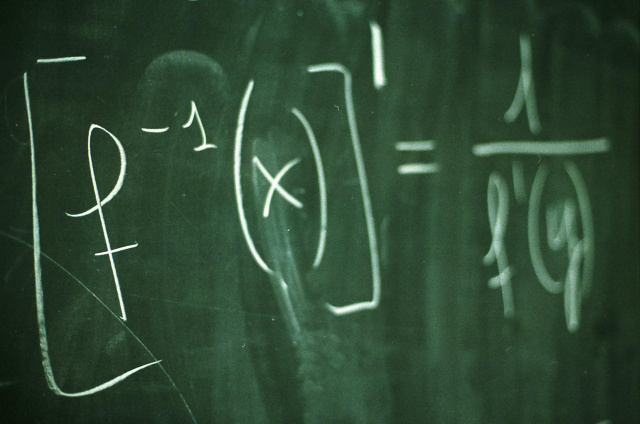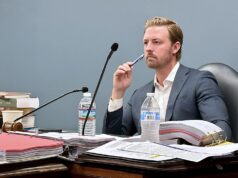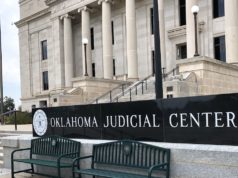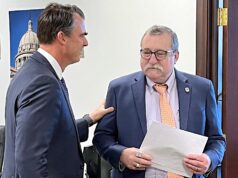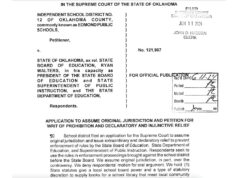“Well, another day has passed and I didn’t use ALGEBRA once.”
You can buy a T-shirt bearing this declaration from an online store whose usual fare runs features slogans like “Kiss Me I’m Irish” or “Left Handers Make Better Lovers.” No telling how popular the algebra shirts are (most must get sold as gag gifts for high school math teachers), but the sentiment is probably widespread.
And accurate: How many of us, after all, use the quadratic formula, or Cramer’s Rule, on a daily or even decadal basis? And what new acquaintance would ever respond to the question of whether she has grandchildren by saying she has two, the older being two years older than the younger, but two years ago the older was twice the age of the younger?
On the other hand, consider the mindful eater who uses algebra before breakfast. More precisely, consider the following two statements:
- People who eat bacon regularly (defined to be three slices per day) are 18 percent more likely to die of colon cancer than their non bacon-eating peers. (This is why the World Health Organization has declared cured processed meat a carcinogen.)
- People who eat bacon regularly have the same risk of dying of colon cancer in the next year as non bacon-eating peers who are one year and nine months older.
Breakfasters who see the risk expressed in (1) as large or (2) as small should know that they are algebraically equivalent: Besides the algebra, you need to know what the lifetime risk of colon cancer death is for the non processed-meat consumers (6 percent) and that, in humans ages 10 to 100, the risk of death increases by about 10 percent per year.
So, is algebra a collection of arcane formulae and contrived puzzles, or an important tool for things like risk assessment? In any case, who needs to know it?
The practical answer to the second question is easy: anybody who wants to go to college. Practically every institution of higher education in Oklahoma requires at least two years of high school mathematics, and it’s almost impossible to do that without taking algebra (many institutions offer algebra remediation to matriculants with algebra deficiencies in performance or on transcripts). I’ll say more about the need for algebra in theory below.
Algebra as defined by the state
As for what algebra is, we can turn to the Oklahoma State Department of Education‘s Oklahoma Academic Standards (OAS). These replace the Common Core standards repealed by legislative act in the 2014 session. The current-draft OAS, subject to legislative review that is scheduled to end Wednesday, reverts to the 2009 Oklahoma Priority Academic Student Skills (PASS). For algebra I, the principal OAS-PASS standards are as follows, with the CC standards they replace in parentheses:
- Standard 1: Number Sense and Algebraic Operations — The student will use expressions and equations to model number relationships. (Seeing structure in expressions)
- Standard 2: Relations and Functions — The student will use relations and functions to model number relationships. (Reasoning with equations and inequalities)
- Standard 3: Data Analysis, Probability and Statistics — The student will use data analysis, probability and statistics to formulate and justify predictions from a set of data. (Mathematical practices)
The expectation for student performance under each standard is further spelled out in the OAS document. For example, using the quadratic formula is covered in item 5a of Standard 2. Word problems, like the coy grandmother mentioned above, are covered in item 1a of Standard 1 (set up the problem) and item 4 of Standard 2 (solve the problem). Reasoning about examples like bacon eating is covered in items 1 and 2 of Standard 3. Cramer’s Rule is left for algebra II.
Practical math versus algebra
It seems unlikely that the Legislature will undertake revision of the proposed OAS algebra standards. Although there are controversies involving math standards that have provoked general public interest, algebra standards are usually excluded. A possible recent exception is the contretemps that have occurred, in some circles, regarding the new book The Math Myth by Queens College teacher Andrew Hacker. The book seems to have started from Hacker’s 2012 New York Times magazine article, Is Algebra Necessary?
Although Hacker’s answer to his titular question is no, he is calling for a math course that pretty much follows Standards 1, 2 and 3 of the OAS instead of a traditional algebra course. And Hacker is also asking, legitimately, about the wisdom of teaching algebra to the 50 percent of high school students who are not college-bound.
Readers old enough to remember the Chuck Berry anthem School Day will recall the lyric,
American history and practical math
You study ’em hard and hopin’ to pass
Most will remember that Berry is able to make “math” and “pass” rhyme, a feat on par with Sam Cooke making “exist” and “fix” rhyme in his ballad Cupid of the same era. (Cooke also rhymes “algebra” and “for” in Wonderful World, of course.)
But back to Berry: Teenagers in the ’50s were all expected to study American history, but the noncollege-bound majority took something called practical math.
Would we be better off teaching practical math instead of algebra today?
Hacker effectively paints the picture of the struggling majority of the 6 million high school students taking algebra every year. Algebra is the first high school math course — even when taken in the eighth grade, as is common these days, it counts for high school math credit. Students who fail it or opt out of it are opting out of a chance to go to college. Hacker is correct that this is a shame and a national problem. Eventually, perhaps, it will be resolved by replacing algebra with some other course. In the meantime, it remains a choke point.
The Algebra Project
Readers who recall Chuck Berry and Sam Cooke or who have studied the history of the period may remember the Student Nonviolent Coordinating Committee (SNCC) and its role in the voting rights for African Americans drives of the early ’60s in the American South. Some of the SNCC leaders who later became famous were Stokely Carmichel, H. Rap Brown, John Lewis and Marion Barry. The SNCC activist who got the organization into the voter-registration drives was named Robert Parris Moses, usually called Bob Moses in those days. The media focus and emphasis on personality led Moses, despite the SNCC successes, to move himself into the background, going by Bob Parris and eventually moving with his family to Africa. He returned to the United States in 1976 and started a graduate program in the philosophy of mathematics (at Harvard) and then started teaching math at a public high school in Cambridge after learning from his daughter that the school didn’t offer algebra.
In 1982, he received a Macarthur Fellowship and used the money to create something he called The Algebra Project. Moses (he had resumed using that name at this point) saw how algebra was the choke point keeping many inner-city students from being admissible to college, and The Algebra Project aims to remedy that.
It has been remarkably successful. The Algebra Project doesn’t try to change algebra, but it helps teachers develop professionally, and it involves parents and communities in the project of having students succeed at algebra. Harvard gave Moses an honorary doctor of science degree in 2006.
As far as I can determine from his Wikipedia page, Moses is still teaching high school math (at age 81!).
The Algebra Project, whose tagline is, “Math Literacy is the Key to 21st Century Citizenship,” is still going strong. Here’s what Bob Moses had to say in a 2012 letter to its supporters:
In the previous two constitutional cycles, 1787–1863 and 1890–1964, mastery of post office arithmetic joined reading and writing as necessary citizenship literacies. In the first two–thirds of this third constitutional cycle, the information technologies have for all practical purposes shifted the quantitative literacy needed for citizenship from arithmetic to algebra.
The Algebra Project has worked for the past thirty years, 1982–2012, to turn the teaching and learning of algebra from an insurmountable obstacle to a highway, to establish algebra into a tool to help expand the nation’s “We The People” reach to include its children.
It’s a powerful response to anyone who wonders why we teach algebra in today’s world.
(One final note: Your author is a doctor of mathematics, not medicine. Bacon is not a health food, and readers should not make decisions about its consumption based on the risk examples cited in this article.)









